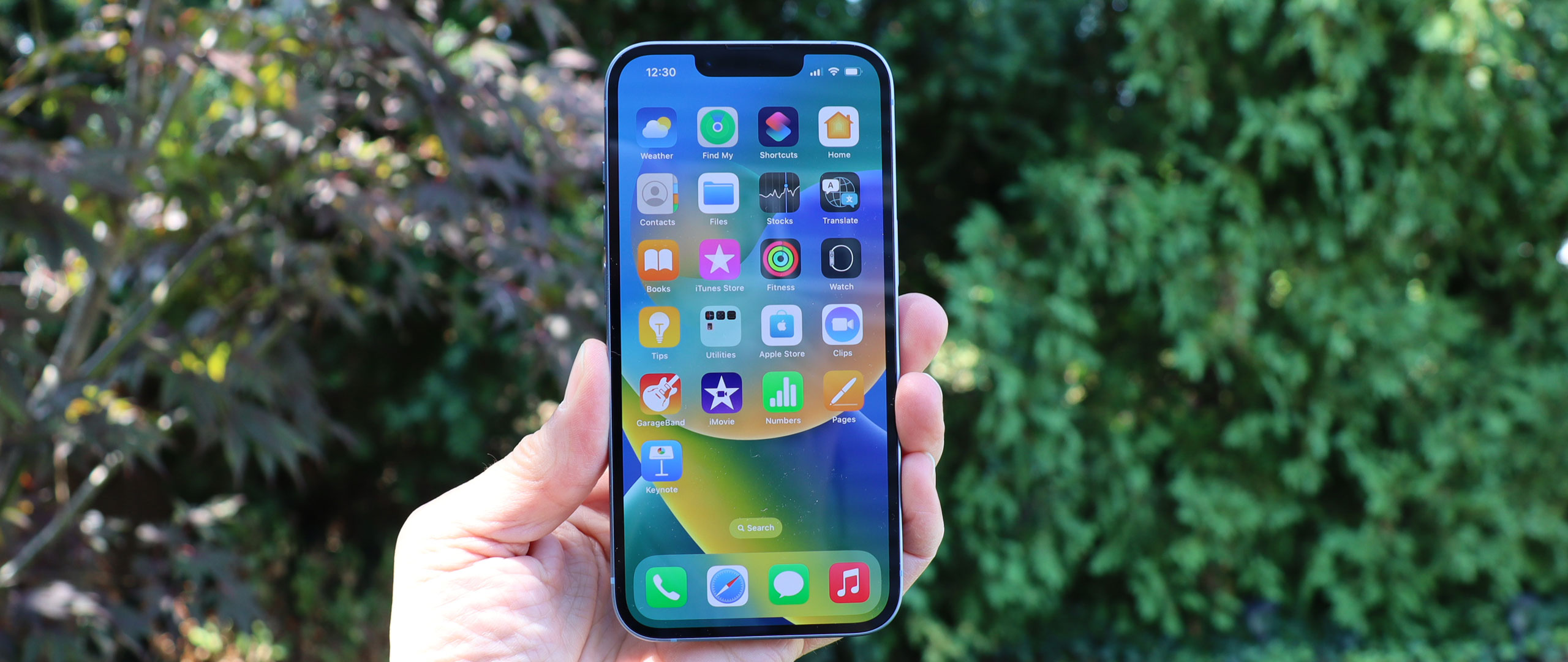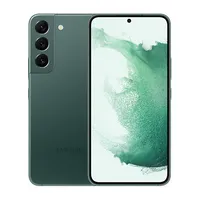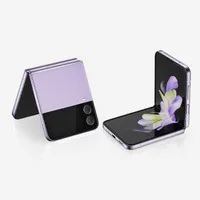TechRadar Verdict
The iPhone 14 is a capable smartphone with a seriously snappy CPU, lovely screen, and good cameras. It pales in comparison to the iPhone 14 Pro, but then you’re also saving $200 / £250 / AU$350. If you’re not looking for a big screen on a budget (for that, see the new iPhone 14 Plus), this solid, if unspectacular iPhone – with a couple of really cool next-gen features that you may never use – might be for you.
Pros
- +
Familiar design and quality build
- +
New heat dissipation interior
- +
Better TrueDepth camera
- +
Emergency satellite communications
Cons
- -
The notch remains
- -
Last generation A15 Bionic chip
- -
Mostly minor upgrade
Why you can trust TechRadar
Two-minute review
It’s a little hard to get excited about an iPhone that features last year's design, last year’s screen, and last year’s CPU, but taken on its own – out of the substantial shadow of the new iPhone 14 Pro – Apple’s new iPhone 14 looks like a pretty darn good smartphone.
Even though the iPhone 14 looks a lot like the iPhone 13, there are numerous upgrades under the hood that promise to deliver an improved experience overall.
The phone's two rear cameras – a 12MP wide and 12MP ultra-wide – have new sensors, and the 12MP TrueDepth camera gobbles up more light and can now autofocus. All the lenses are backed by Apple’s new Photonic Engine ("photonic" refers to the management of photons, or light particles – read more about it in our iPhone 14 camera explainer). In a practical sense, it’s a reordering of Apple's imaging pipeline, which now applies the Deep Fusion neural engine image processing to uncompressed images (rather than compressed ones, as it did previously).
What you won’t find here is a 48MP sensor with quad-pixel binning or any kind of zoom. For those, you need to upgrade to the iPhone 14 Pro or iPhone 14 Pro Max.
There’s still the excellent Super Retina XDR OLED screen, but if you’re not a fan of that notch you may again want to go for the 14 Pro or Pro Max, which are rocking Apple’s nifty new Dynamic Island, along with an adaptive refresh rate and always-on display.
Apple also made the decision to keep the iPhone 14 and 14 Plus on last year’s Apple silicon. Granted, it’s not the same A15 Bionic that ran last year’s iPhone 13 and 13 mini. Instead of a four-core GPU, this A15 Bionic has a five-core GPU. It’s essentially the same chip that was in last year’s iPhone 13 Pro and 13 Pro Max, and should promise improved performance over the iPhone 13’s chip.
For all that hasn’t changed, there are some cool new (though hard-to-test) features, like crash detection; where the phone will know if you’re in a car crash and automatically alert emergency services and key contacts. In a similar vein, the iPhone 14 can now use satellite communications to contact emergency services. It’s an industry first, and it’s good to see that even Apple’s entry-level iPhone 14 got this new ability.
Sign up for breaking news, reviews, opinion, top tech deals, and more.
There are some other significant under-the-hood updates, specifically a new heat dissipation system that will help the phone manage temperatures better, and work more efficiently (this phone has better battery life than the iPhone 13). Apple also contends that this iPhone is easier to repair than previous models, as – among other things, the back glass can now be replaced without have to swap out the entire enclosure.
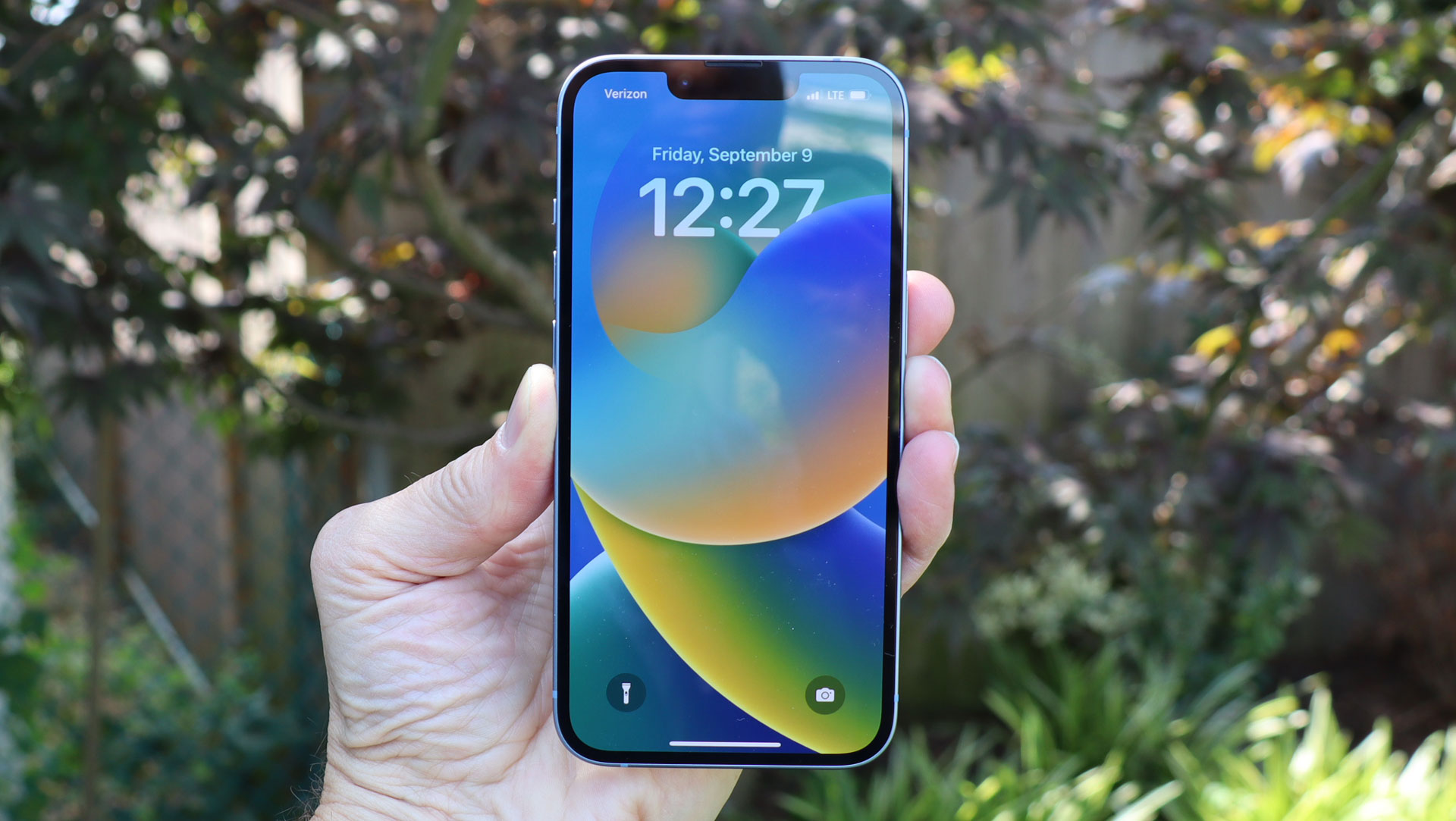
Apple iPhone 14 price and availability
- 128GB: $799 / £849 / AU$1,339
- 256GB: $899 / £959 / AU$1,579
- 512GB: $1,099 / £1,179 / AU$1,899
Apple unveiled its entire iPhone 14 line – the iPhone 14, iPhone 14 Plus, iPhone 14 Pro, and iPhone 14 Pro Max – on September 7, 2022.
The iPhone 14 went on pre-order on September 9 and is now available, as of September 16. It starts at $799 / £849 / AU$1,399 for the 128GB model, but you can get it with up to 512GB of storage (check out our best iPhone 14 deals if you're already interested).
Unlike most Android phones, there are no options for additional RAM, beyond the baseline 6GB, although that is more than the base iPhone 13, which had only 4GB.
In some cases, the latest Apple promo codes can help you save towards the cost.
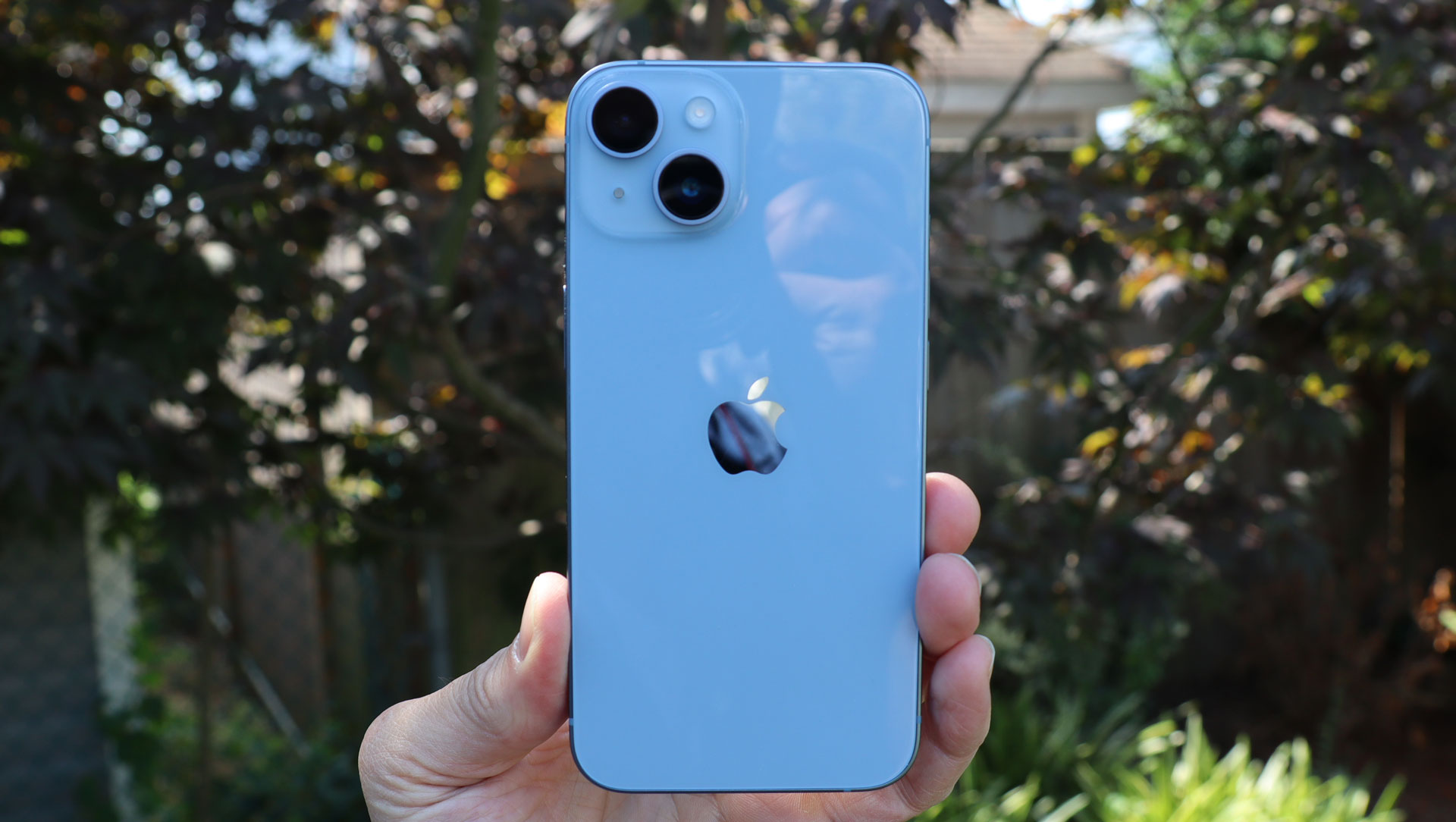
- Value score: 3.5/5
Apple iPhone 14 review: Specs
The Apple iPhone 14 comes in three storage configurations – 128GB, 256GB and 512GB – with 6GB of RAM offered across the board.
| Header Cell - Column 1 | |
|---|---|
| Dimensions: | 71.5 x 146.7 x 7.8mm |
| Weight: | 172g |
| Screen: | 6.1-inch Super XDR OLED |
| Resolution: | 2532 x 1170 pixels |
| Refresh rate | 60Hz |
| CPU: | A15 Bionic |
| RAM: | 6GB |
| Storage: | 128GB / 256GB / 512GB |
| OS: | iOS 16 |
| Rear Cameras: | 12MP main (26mm, f/1.5), 12MP ultrawide (13mm, f/2.4) |
| Front Camera: | 12MP |
| Battery: | 3,279mAh |
| Charging: | 20W (wired) + MagSafe & wireless |
| Colors: | Midnight, Starlight, red, blue, purple, yellow |
Apple iPhone 14 design
- Near-identical design to iPhone 13
- The SIM slot is gone (US-only)
- Same notched Super Retina XDR display
Aside from new colors – we tested the tasteful pale blue model – the 6.1-inch iPhone 14 looks very much like the iPhone 13. Its aluminum frame, button placement, stereo speaker grilles, Lightning port, and even the screen, all appear unchanged. There are, though, tiny structural differences.
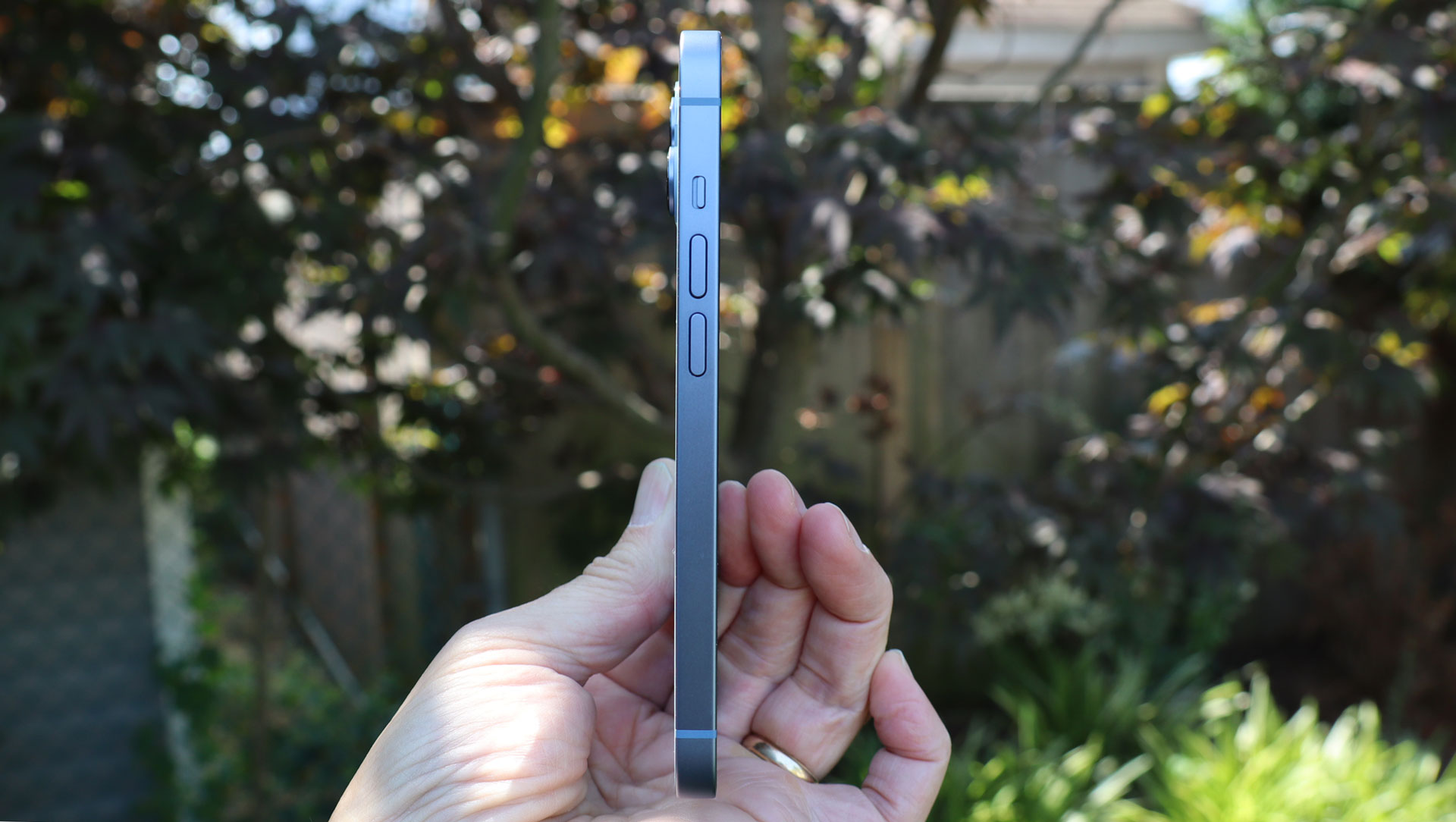
At 146.7 x 71.5 x 7.8mm, it’s just a hair thicker than the iPhone 13. It’s also two grams lighter than the last phone, which we assume is down to the new thermal architecture inside the device. Despite the chassis similarities, the iPhone 14 doesn’t quite fit in an official iPhone 13 MagSafe case – the body slides in just fine, but the iPhone 14’s two-lens camera array is slightly larger (as are the lenses themselves).
All the materials – including the Ceramic Shield covering the display – are the same, and the dust and water resistance remains unchanged from the iPhone 13, as well. Naturally, we ran our iPhone 14 through a sprinkler, just to ensure it could handle it. It was fine – and it may have enjoyed the respite from the New York heat.
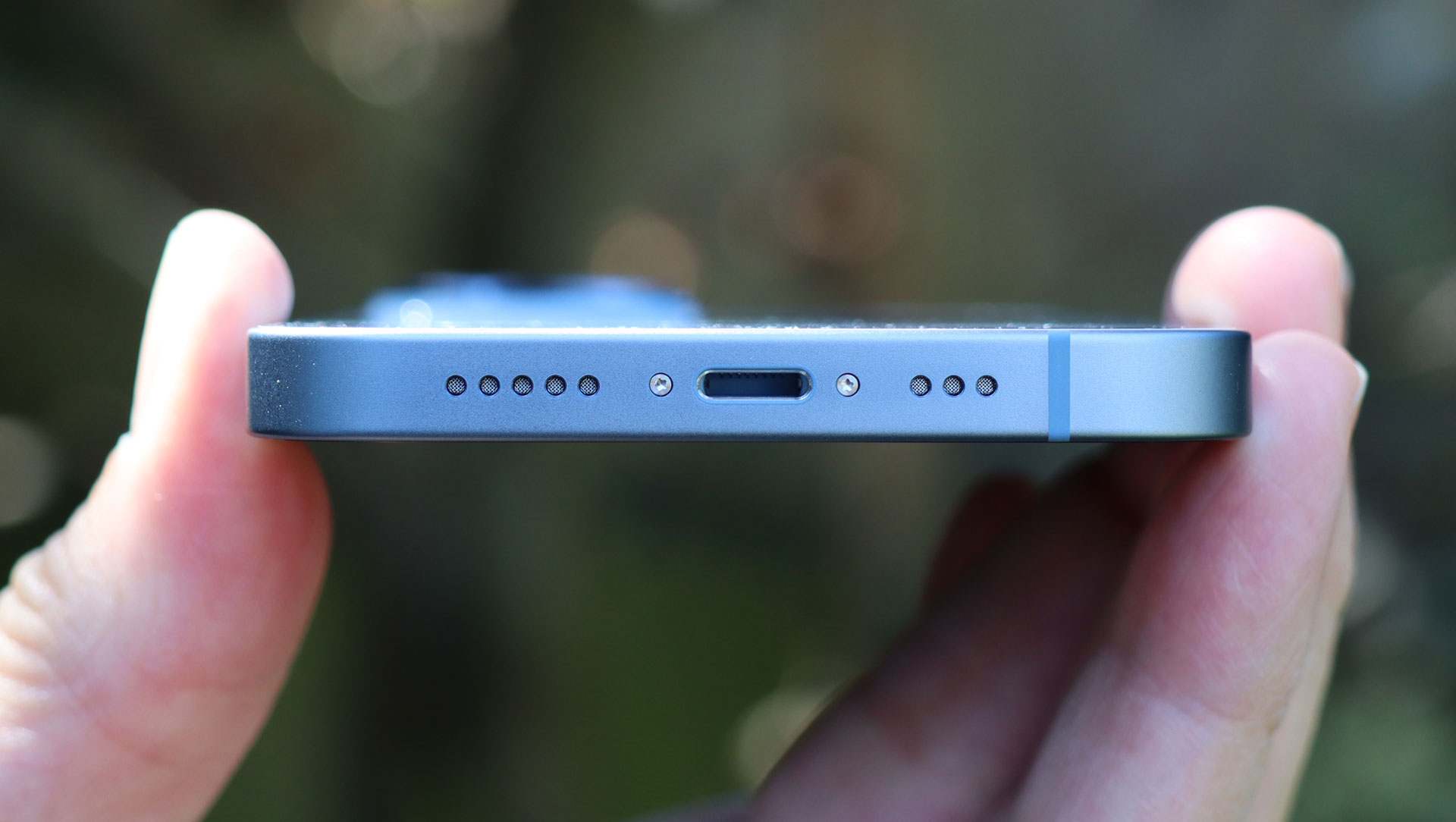
Design score: 4/5
Apple iPhone 14 display
- Familiar 6.1-inch Super Retina XDR
- The notch persists
- No adaptive refresh or always-on functionality
- Still a high-quality OLED display
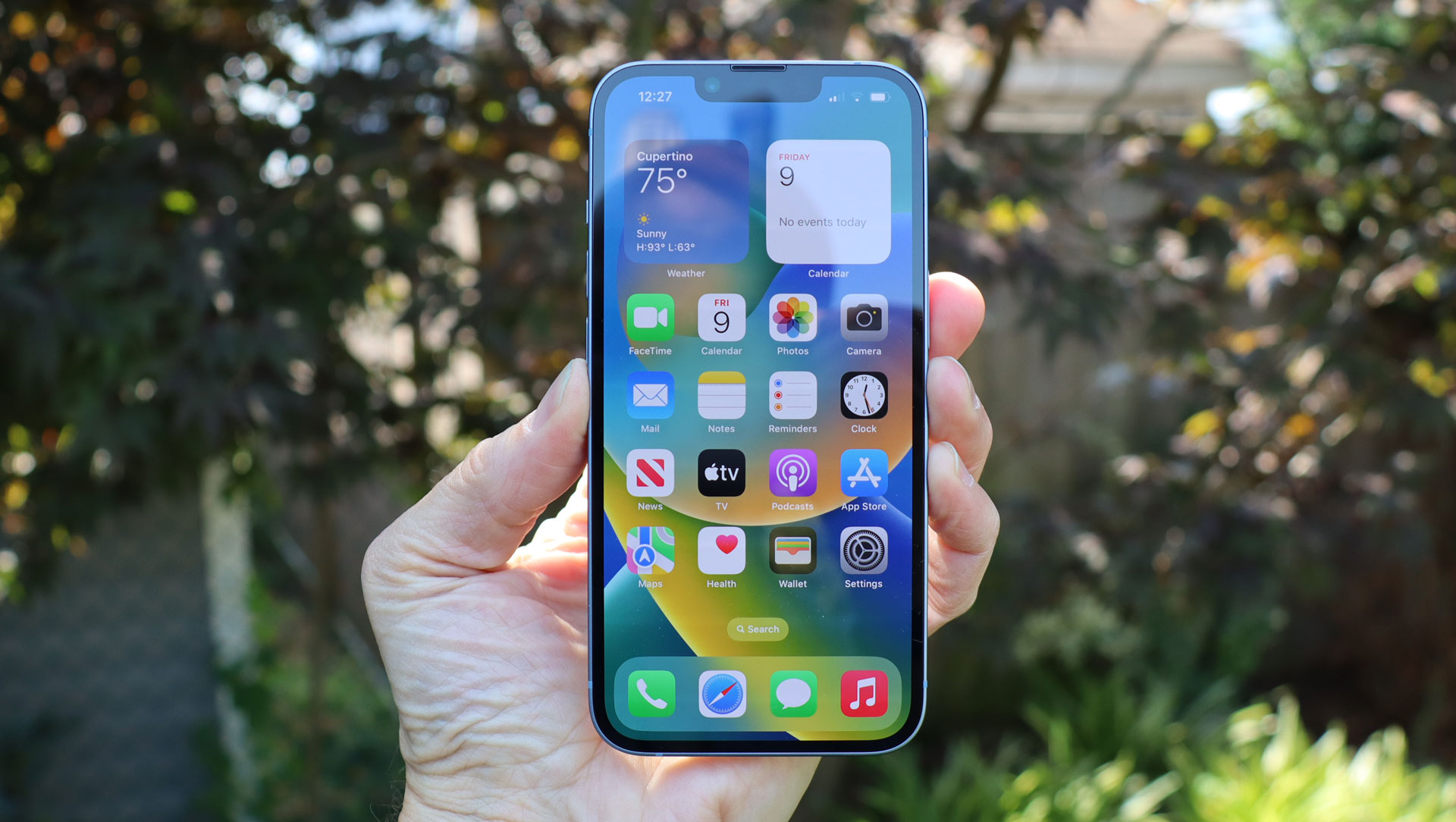
With a 2532 x 1170, 460ppi resolution, the iPhone 14’s Super Retina XDR display is almost entirely unchanged from the iPhone 13. The notch that’s been banished from the iPhone 14 Pro and Pro Max lives on in this now somewhat aging design. It encompasses an updated TrueDepth camera (it’s still 12MP, but backed by a better light-gathering sensor and has the ability to autofocus), an IR sensor, flood illuminator, and, above it all, the top speaker (the other speaker is on the bottom of the phone). This is likely the last hurrah for the notch, as it seems hard to believe that it’ll survive in next year’s anticipated iPhone 15.
Even though this is a bright (up to 1,200 nits) and colorful (Wide Color) display with (thanks to OLED) inky blacks (boasting a 2,000,000-to-1 contrast ratio), it automatically feels out of step with the latest in Apple display technology. There’s no adaptive refresh rate, and not even the120Hz ProMotion that we first met on 2021's Pro models. Just 60Hz. That might be hard to swallow when the iPhone 14 Pro and Pro Max offer adaptive refresh rates that range from 10Hz to 120Hz. Plus, those phones have a new always-on display mode that can stop down to just 1Hz, for extra power efficiency. Again, this is what you pay extra for.
- Display score: 3.5/5
Apple iPhone 14 cameras
- Familiar 12MP main + ultrawide on the back
- New sensors across the board
- Photonic Engine further improves image quality
- New Action mode
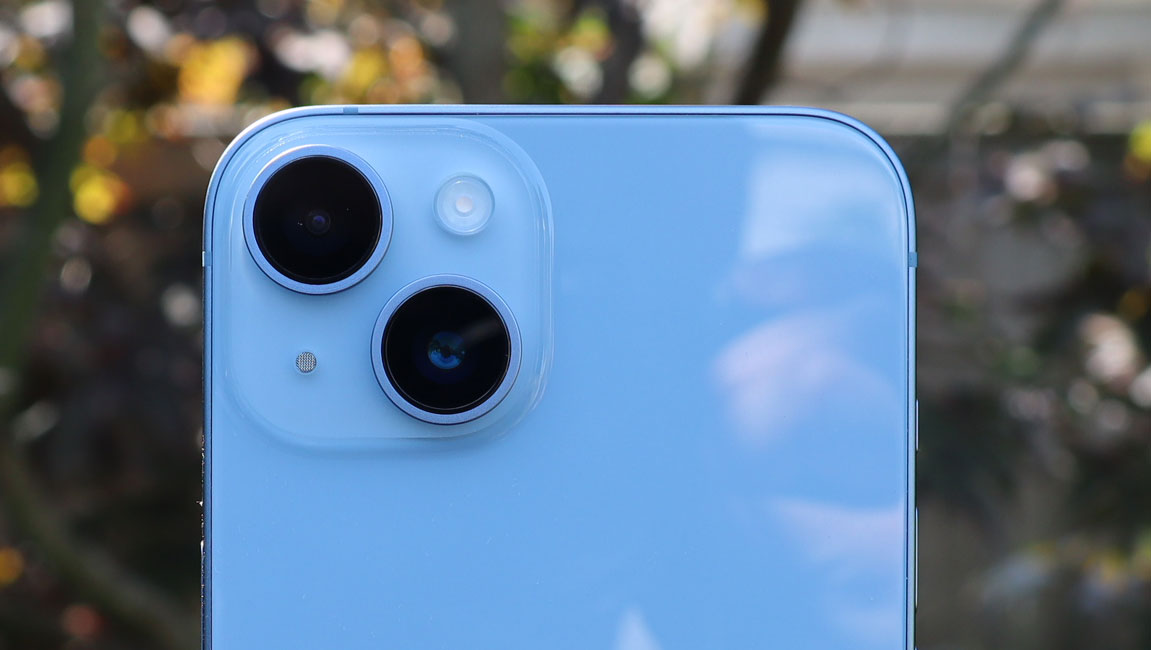
The iPhone 14 has just two rear cameras:
- A 12MP main (26mm, f/1.5)
- A 12MP ultrawide (120-degree field of view, 13mm, f/2.4)
These are good cameras with better sensors and overall low-light performance compared to their predecessors. The front camera – also 12MP – now has autofocus too, which should make group selfies somewhat easier.
All the cameras benefit from a new imaging pipeline. The Photonic Engine prioritizes Deep Fusion neural image processing earlier than previously, so it can work with uncompressed images.
Photography with the iPhone 14 is good, though having also tested the iPhone 14 Pro, we do miss having optical zoom and macro abilities at our fingertips. Even so, this level of photographic capability and the high-quality output should satisfy most users.
Like the rest of the iPhone 14 line, this model can shoot up to 4K video, and Cinematic Mode has now been pumped up to support 4K at 30fps.
Brand new is Active Mode, which is enabled by selecting the running person icon in the top right-hand portion of the camera app’s viewfinder. This is a surprisingly effective way of removing much of the shake from action videos. No, there isn’t a new gimbal in the iPhone 14; instead, Apple employs over-scan and advanced roll detection – which is a fancy way of saying it rapidly and on-the-fly crops the video to keep the center (usually a subject) more smoothly in-frame. This processing does discard some video information (resulting in a cropped frame), but the results are GoPro-smooth. I’m not sure how wildly useful this is, but if you’re an action fan it might be a godsend.


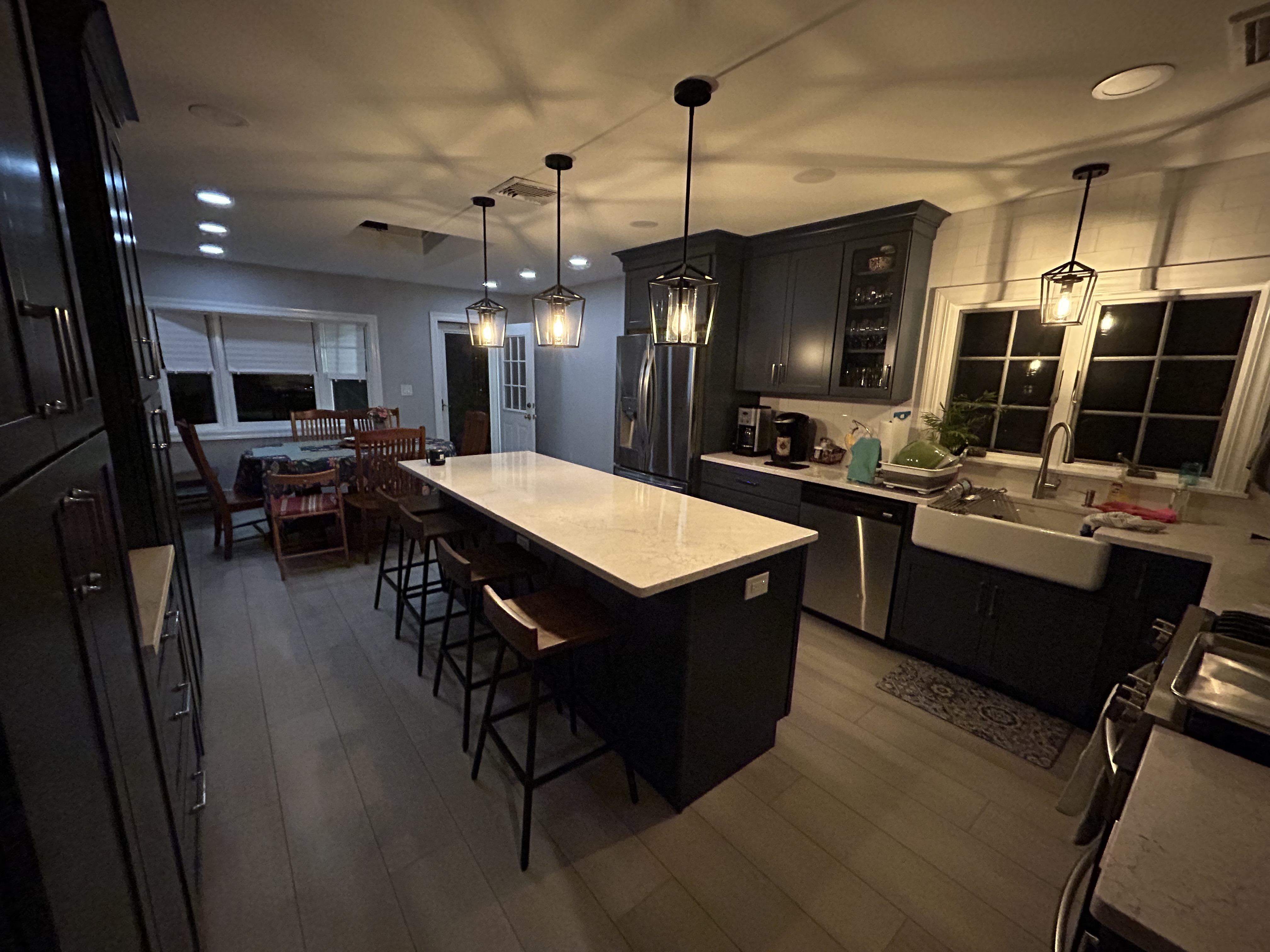
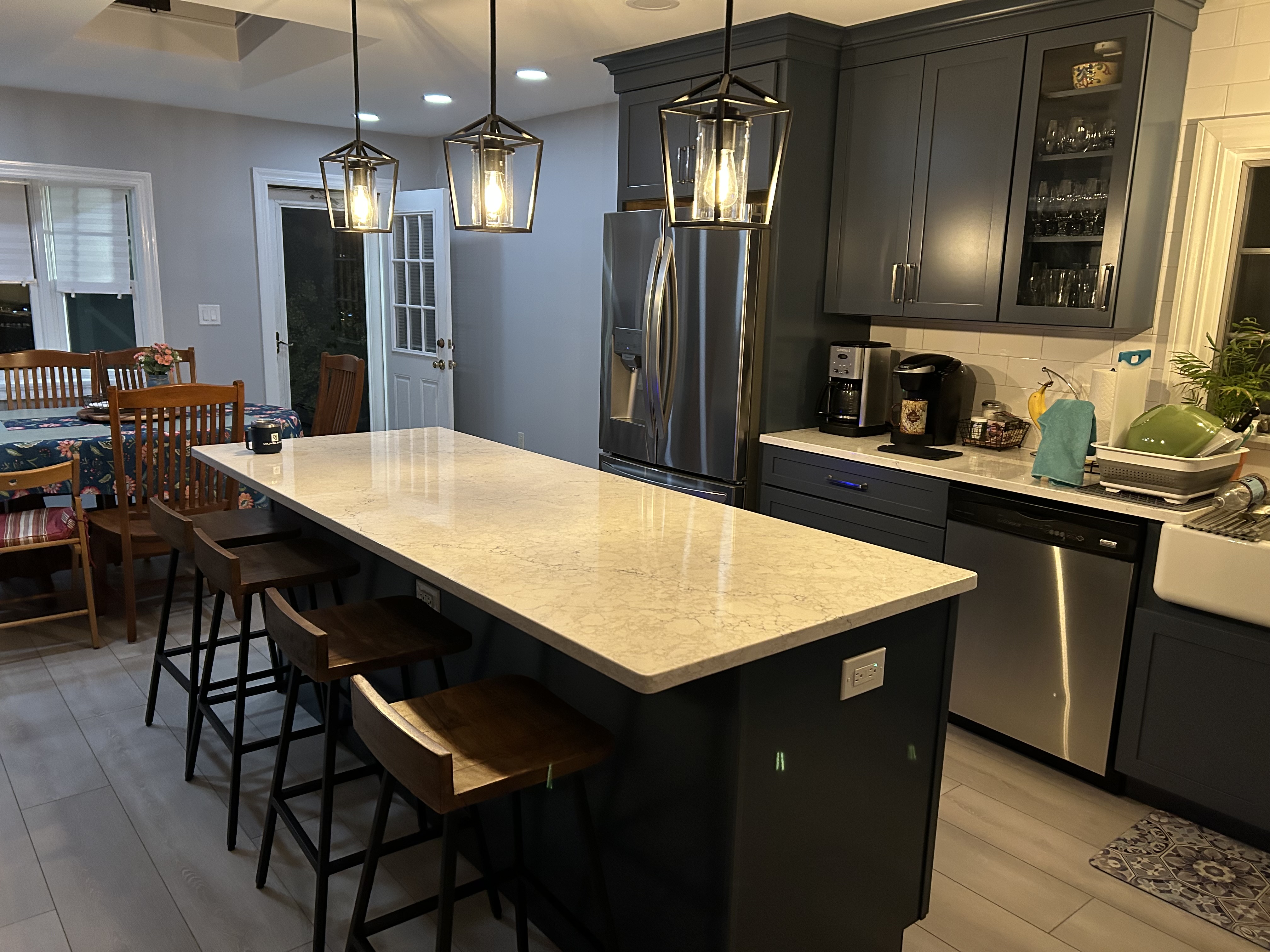







- Camera score: 3/5
Camera samples
Apple iPhone 14 audio
At least Apple has been consistent on the audio side. All four iPhone 14 models have stereo speakers and spatial audio support, and create loud (if you want), clear, and bright sound. In movies and music that support it, spatial audio adds a sort of surround-sound effect. There are titles on Netflix, Amazon, and other streaming services to enjoy the feature, plus Apple Music has an entire spatial audio playlist to dive into. Everything we played on the iPhone 14 sounded great.
Apple iPhone 14 performance
- Uses the iPhone 13 Pro's A15 Bionic chip
- New heat dissipation system gives the processor more breathing room
- Good performance for the price
Oh hey, last year’s mobile CPU! We need to start out by making clear that there is nothing wrong with the A15 Bionic. It’s a powerful chip that has consistently beaten the best Qualcomm has to offer, and it has substantial headroom, which means mobile games like Asphalt: Legends and PUBG run smoothly. You can edit 4K videos, browse the web, do all the things you can do with the faster and more efficient A16 Bionic found in the iPhone 14 Pro and Pro Max, with the real-world difference likely only really becoming apparent after years of use.

What Apple did here – bringing the enhanced A15 chip from the iPhone 13 Pro to the iPhone 14 – was kind of smart. It’s a good cost-saving move that will leave nobody wanting.
The A15 Bionic, as it lives inside the new iPhone 14, has a new internal design for more efficient heat dissipation. This, Apple claims, helps with repairability, but a cooler chip should also run better.
While benchmarks were more or less in line with the A15 Bionic we tested in the iPhone 13 Pro, this iPhone does promise better battery life (20 hours of video streaming, as opposed to 19 hours for the iPhone 13), despite having an only fractionally-bigger battery; suggesting Apple’s efforts with the cooling system are responsible for this improved efficiency.
- Performance score: 4/5
Apple iPhone 14 eSIM and satellite connectivity
In the US, the entire iPhone 14 line is now SIM-slot free, instead employing eSIM technology for connecting you to the cell network. In our experience, it introduced no difficulty in setting up the iPhone 14; although granted, Apple already assigned our handset a phone number for testing purposes. If you want to transfer your existing physical SIM info from your old iPhone to a new one, you should be able to do it electronically, without the help of your carrier. We’ll understand how well this all works when these new SIM-less iPhones get into consumers’ hands.
The other cool, new connectivity feature is satellite-based emergency SOS. Apple is working with Globalstar low-Earth orbit satellites to provide this extra level of emergency support. While it’s not something we could test, we did see it in action at Apple’s Cupertino, California campus.
We walked up a hill where cell and Wi-Fi were purposely unavailable. On the iPhone 14 Pro used for the demo (we’re assuming that the system works the same on the iPhone 14), we noticed a tiny ‘SOS’ and satellite icon in the upper-right quadrant of the display. Note that these icons won’t appear unless you’re outside, with a clear view of the sky.
If you dial 911 (in the US) in this situation, the iPhone 14 will, as it did in our demo, ask if you want to try emergency text via satellite. After that, an on-screen emergency assistant offers a visual cue for which way you should face to connect to the nearest satellite. It then asks you a series of questions that the system can deliver via compressed text to Apple’s relay center, which then contacts emergency services.
If, during the communication, a satellite moves out of range, the system will prompt you face in the right direction to reconnect.
While satellite communications are primarily for emergency situations, you can also use the system to let people know via Find My that you, for example, successfully made it to the top of Mount Everest or Snowdon.
Apple iPhone 14 battery
- Enough juice for a busy day
- Wireless charging + MagSafe
- Buy your own adapter
As I mentioned above, the iPhone 14 is rated for 20 hours of video playback, 16 hours of streamed video, and 80 hours of audio playback. We got more than a full day’s battery life off a single charge. The iPhone 14 ships with a Lightning-to-USB-C charge cable and no charger.
You can buy a 5W adapter, or spend a bit more for Apple’s 20W charger, which will get you to 50% charge in 30 minutes. The phone is also MagSafe and Qi wireless charging compatible.
- Battery score: 4/5
Apple iPhone 14 software
- All iPhone 14 models ship with iOS 16
- Filled with new features
- Custom lock screens, unsending texts, and cleaner notifications are highlights
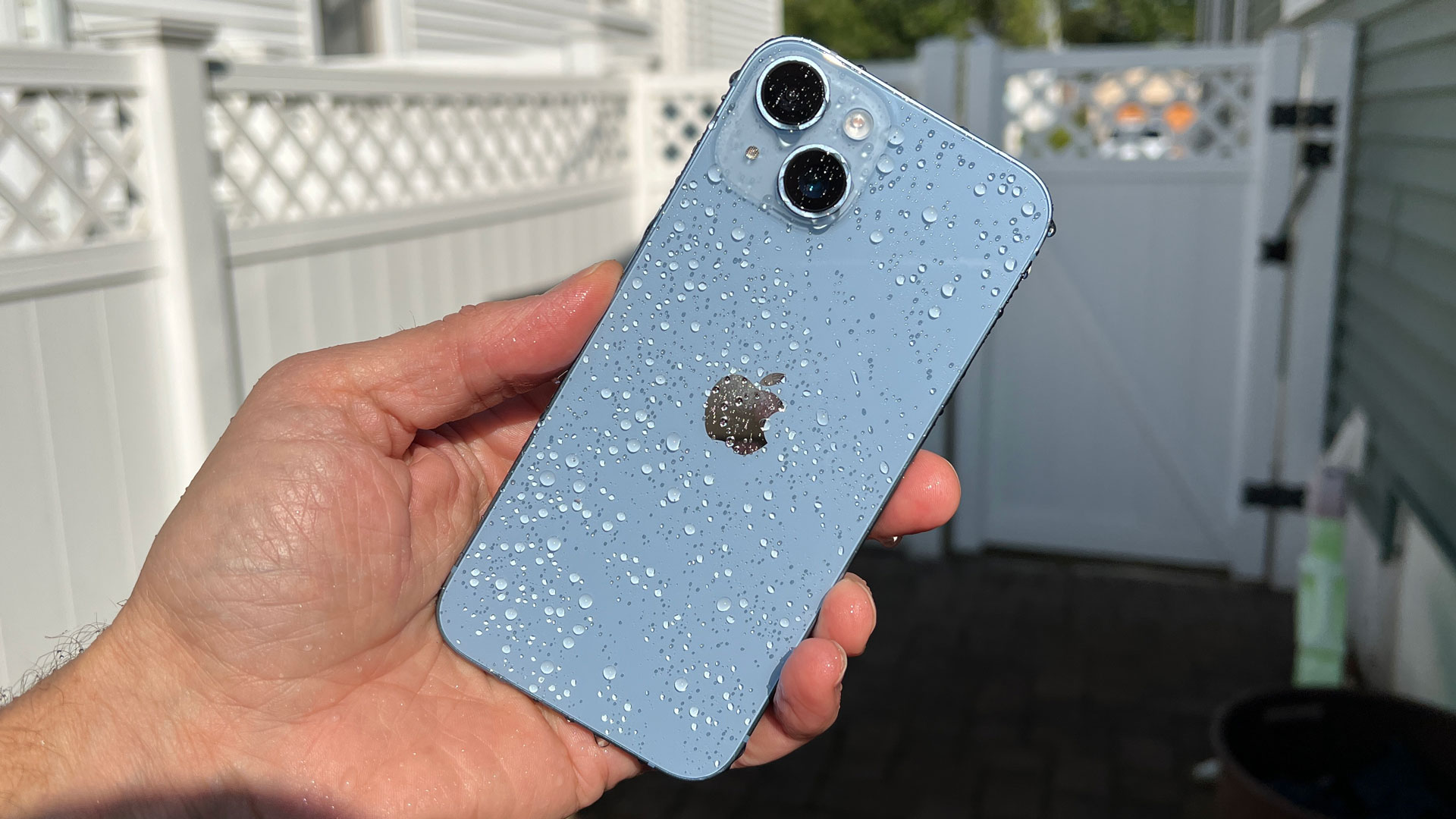
All Apple iPhone 14 handsets ship with iOS 16. It’s a worthwhile upgrade that offers some of the most significant platform changes we’ve seen in a while.
Highlights include a new lock screen. Instead of one static screen, you get multiple screens, each with their own focus mode attached.
There are powerful image tools that let you take any photo and use it on your lock screen with, for instance, a portion of someone’s head peeking over the redesigned time readout. You can also add widgets (different ones for each lock screen) to really personalize the experience.
There are other cool features, like editable and retrievable texts, multi-stop directions in Maps, live text in videos, and more.
It’s a good OS update, and we think it enhances any iPhone running it.
- Software score: 4.5/5
This is now Apple’s lightest and cheapest iPhone 14. It’s more than 30 grams lighter than the similarly sized iPhone 14 Pro, which starts at $899. It lacks the latest screen technology, still has a notch, and only has two rear cameras, which for some, may feel like big trade-offs, in order to save $200, but for others, the Pro might be overkill.
The iPhone 14 is Apple's 'good enough', which, as it happens, is still pretty superb. It's unlikely to disappoint most users, even if new owners may be left casting sideways glances at iPhone 14 Pro users flaunting their always-on displays and their Dynamic Islands.
Apple iPhone 14 score card
| Attributes | Notes | Rating |
|---|---|---|
| Design | Near-identical design to iPhone 13 | 4/5 |
| Display | Familiar 6.1-inch Super Retina XDR | 3.5/5 |
| Performance | Uses the iPhone 13 Pro's A15 Bionic chip | 4/5 |
| Camera | Familiar 12MP main + ultrawide on the back | 3.5/5 |
| Battery | Enough juice for a busy day | 4/5 |
| Software | iOS 16 is one of Apple's biggest platfomr updates in a while | 4.5/5 |
| Value | A good if familiar phone at, fortunately, an unchanged price | 3.5/5 |
Should I buy the Apple iPhone 14 Pro?
Buy it if...
You want an affordable, effective iPhone
This isn’t the fastest or most feature-rich iPhone, but it’s light, fast, and attractive.
You want good battery life and great photography
The iPhone 14’s camera array is better than the iPhone 13’s, and will make most mobile photogs very happy. It also lasts more than a day on a single charge.
You have some affection for the notch
Maybe you like the notch. After all, it’s so much more than a chunk out of your display; it's a more affordable way to get Face ID, AR-powered face filters an access to that new autofocus selfie snapper that all the iPhone 14 models get.
You want an affordable way into satellite SOS
Apple didn't do much to the iPhone 14, but it does have the ability to talk to satellites and help get you out of a jam, that's pretty unique, powerful feature on the market right now.
Don't buy it if...
If you want the latest
The iPhone 14 doesn’t have an adaptive refresh rate or always-on display. It’s also running a now one-year-old CPU, even if that chipset is still stellar.
You want optical zoom
The iPhone 14 has just two rear cameras, and neither is a telephoto lens.
Also consider
Samsung Galaxy S22
The Samsung Galaxy S22 is small, fast, and offers a clean and reliable Android experience. It's an incremental update that keeps what was good in the S21, and upgrades the camera, processor, and materials to create a solid Android device.
Read our Samsung Galaxy S22 review for more
OnePlus 10 Pro
The OnePlus 10 Pro is a great premium all-around phone - it has a good-looking screen, fast charging and powerful internals. The cherry on the cake is that it costs less than other Pro phones, making it an incredibly tempting choice. However, its Achilles’ Heel is the camera experience - there are a few problems with both the hardware and software that might put off passionate photographers.
Read our OnePlus 10 Pro review for more
Samsung Galaxy Z Flip 4
Samsung has addressed some of the Z Flip 3's biggest pain points with its 2022 successor; mainly by way of a larger battery that fits into a more compact form factor, but there's still plenty of room left for further improvement. Price versus performance remains unmatched in the market, especially when you consider this is one of the only water-resistant foldables out there.
Read our Samsung Galaxy Z Fold 4 review for more
First reviewed: September 2022

A 38-year industry veteran and award-winning journalist, Lance has covered technology since PCs were the size of suitcases and “on line” meant “waiting.” He’s a former Lifewire Editor-in-Chief, Mashable Editor-in-Chief, and, before that, Editor in Chief of PCMag.com and Senior Vice President of Content for Ziff Davis, Inc. He also wrote a popular, weekly tech column for Medium called The Upgrade.
Lance Ulanoff makes frequent appearances on national, international, and local news programs including Live with Kelly and Mark, the Today Show, Good Morning America, CNBC, CNN, and the BBC.
